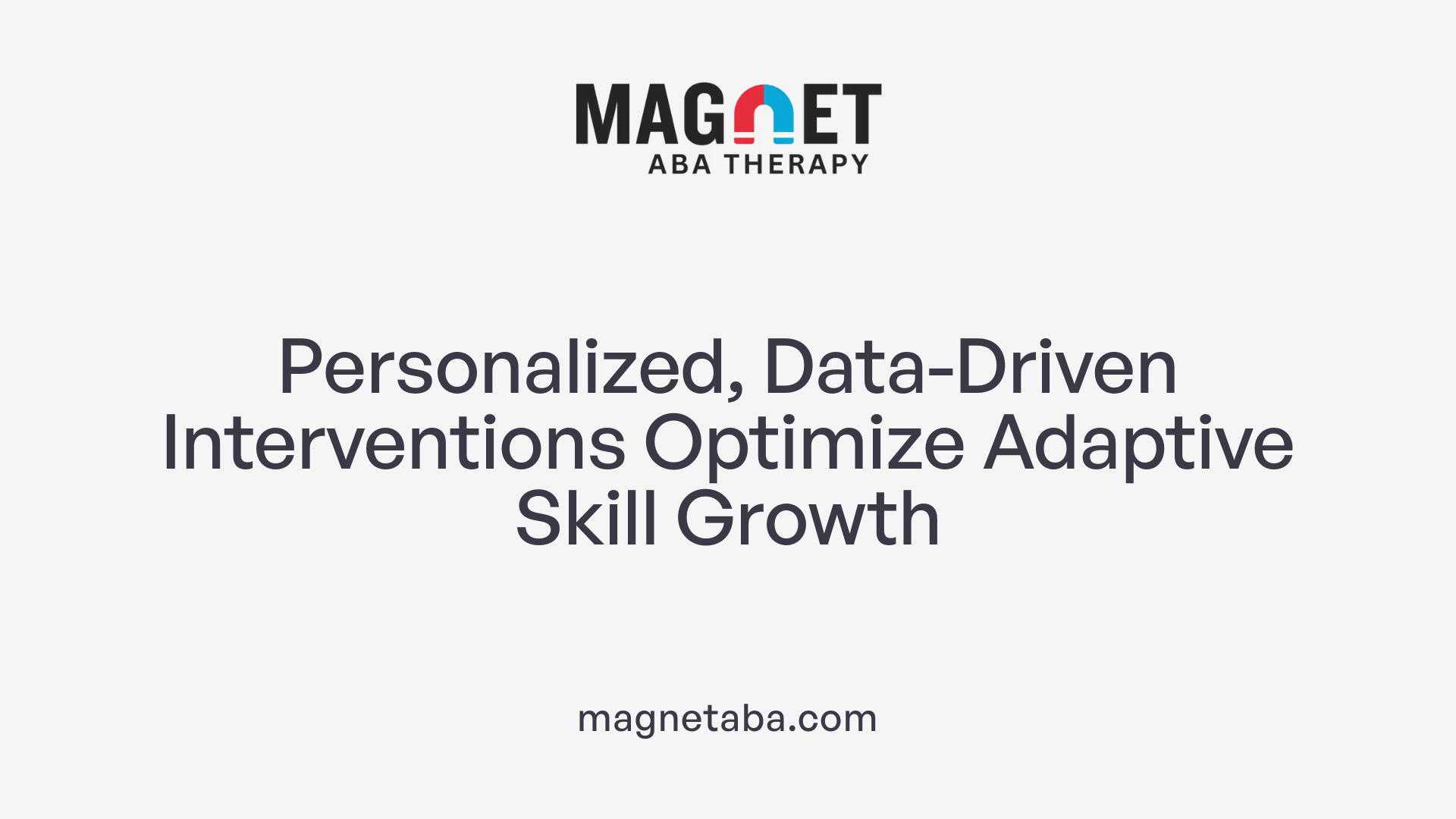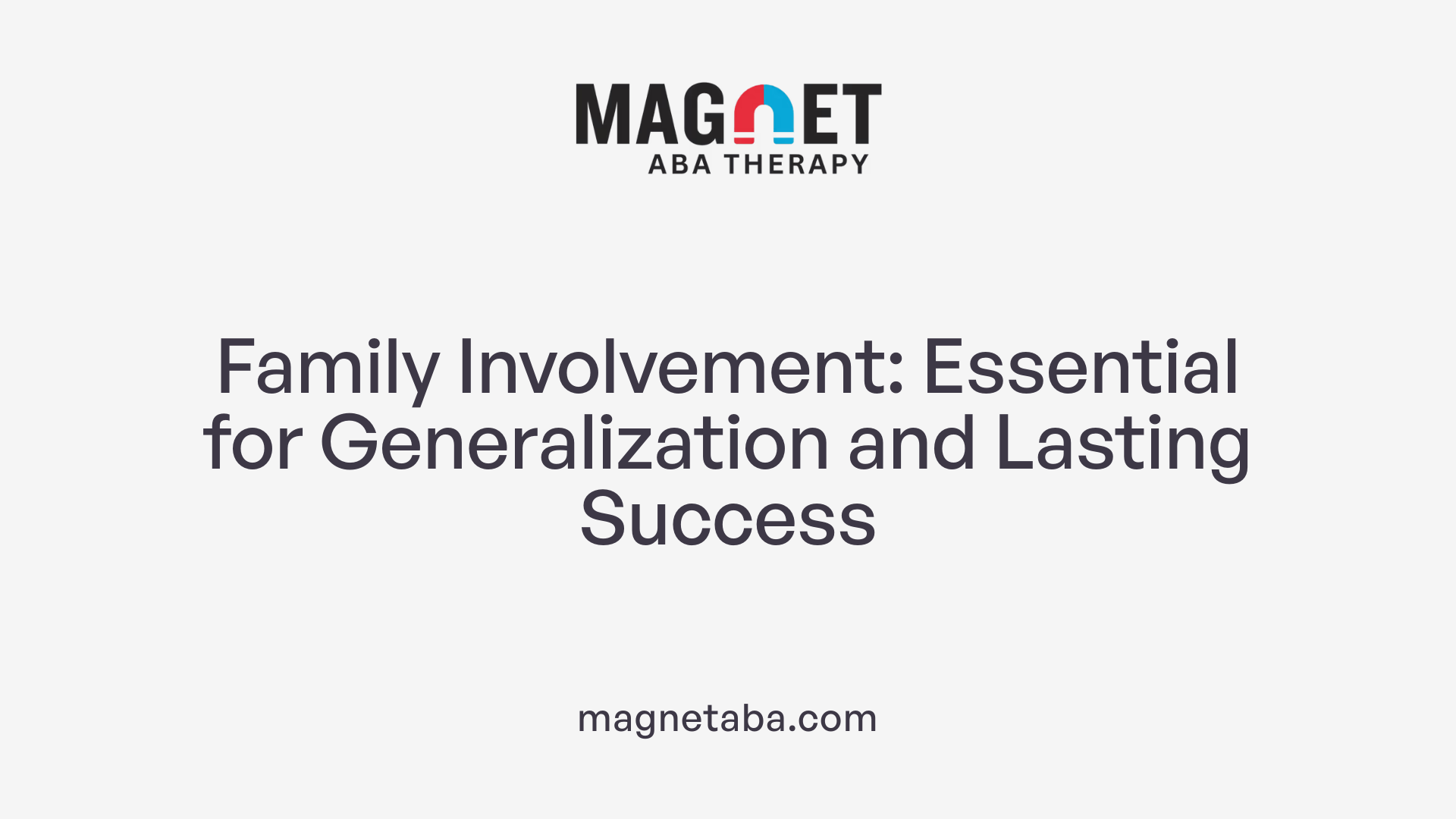Understanding the Power of ABA in Developing Adaptive Skills
Applied Behavior Analysis (ABA) is a scientifically grounded approach that has revolutionized the way professionals support individuals with autism and developmental disabilities. Its principles and methods are designed to systematically teach, reinforce, and generalize adaptive behaviors that are essential for everyday living. This article explores how ABA facilitates meaningful development across various domains, including communication, social skills, and independence, highlighting evidence-based practices, techniques like DTT and NET, and the positive outcomes achieved through early and personalized intervention.
Foundation and Principles of ABA in Supporting Adaptive Skills

How does Applied Behavior Analysis (ABA) support the development of adaptive behaviors?
Applied Behavior Analysis (ABA) is a scientifically grounded approach that aims to enhance individuals' abilities to function effectively in daily life. It relies on well-established principles of behavior analysis, such as reinforcement, prompting, and systematic measurement. These techniques help identify the functions of behaviors, allowing practitioners to develop targeted interventions.
ABA employs various intervention methods like discrete trial training, natural environment teaching, and task analysis, which break down complex skills into manageable steps. Reinforcement, especially positive reinforcement, rewards desired behaviors, encouraging their repetition. Data collection is continuously used to monitor progress and modify strategies, ensuring that goals are met efficiently.
Training is personalized based on comprehensive assessments, with professionals involved in setting specific benchmarks and adapting goals as the individual progresses. This systematic process ensures that learned behaviors are generalized across different environments, making skills more meaningful and applicable.
Research supports that early, intensive ABA programs significantly improve a broad range of adaptive skills, including communication, social interaction, and daily living. These improvements lead to greater independence and a better quality of life. When integrated into routines and reinforced consistently, adaptive behaviors become durable and help individuals meet life's challenges more successfully.
In summary, ABA influences adaptive behavior development through evidence-based techniques, ongoing data analysis, and tailored planning. It not only teaches new skills but also reduces problematic behaviors, paving the way for meaningful participation in society.
Techniques and Strategies Used in ABA to Foster Adaptive Skills

What specific techniques, such as Discrete Trial Training (DTT) and Natural Environment Teaching (NET), are used in ABA to promote adaptive behaviors?
ABA employs a variety of structured techniques tailored to individual needs. Discrete Trial Training (DTT) is a highly structured approach where skills are broken down into small, manageable steps. It involves clear instructions, immediate reinforcement for correct responses, and repetitive practice until mastery is achieved.
Natural Environment Teaching (NET), on the other hand, focuses on teaching within everyday, natural settings like during play or routine activities. This approach promotes functional and generalizable skills that children can use across different environments.
Other methods include modeling, where children imitate behaviors demonstrated by therapists or caregivers. Prompting and fading provide assistance when needed and gradually reduce support as the child gains independence. Shaping reinforces successive approximations toward the target behavior, helping children acquire complex skills step-by-step.
Additionally, functional communication training (FCT) helps children learn effective ways to communicate, reducing problematic behaviors. Visual supports like schedules and social stories aid understanding and predictability. Sensory and movement breaks are incorporated to maintain engagement and address sensory needs.
All these techniques work synergistically to help children develop communication, social, and daily living skills, enhancing their ability to function independently.
What does research say about the effectiveness of ABA in developing adaptive behaviors?
Research supports ABA's effectiveness in fostering adaptive skills in children with autism and other developmental disabilities. Numerous studies and meta-analyses report that ABA interventions often produce small to moderate improvements in key areas such as communication, socialization, and daily living skills.
The results tend to be more pronounced with longer and more intensive programs, typically ranging from 12 to 24 months. Factors like consistent family involvement, early intervention, and individualization of treatment plans significantly influence outcomes.
Children with lower initial adaptive skills often show greater gains, demonstrating ABA's ability to address diverse starting points. Even lower-dose ABA programs have been shown to yield beneficial effects.
While challenges exist in implementation and resource allocation, current evidence affirms ABA's role in effectively improving adaptive behaviors, setting children on a path toward greater independence and quality of life.
The Role of Individualization and Data-Driven Approaches in ABA

How does ABA therapy enhance independence and daily living skills?
ABA therapy is highly tailored to each child's unique needs, which is essential for improving independence in daily activities. Therapists develop personalized treatment plans based on comprehensive assessments that identify specific skills children need to learn and the behaviors that require modification.
One cornerstone of ABA in fostering independence is the use of task analysis. This technique breaks down complex daily routines—such as dressing, grooming, or preparing a snack—into smaller, manageable steps. By teaching each step systematically, children gain confidence and mastery, gradually building up to complete tasks independently.
Reinforcement strategies, especially positive reinforcement, play a vital role. When children successfully complete a step or activity, they receive rewards like praise or tangible items, motivating them to repeat and solidify these behaviors. Fading prompts and cues over time help children transfer skills from highly structured settings to natural environments like home or community spaces.
Natural environment teaching and caregiver involvement are integral components. These approaches ensure that skills learned during therapy sessions generalize effectively to real-world situations, making them more functional and lasting.
Progress is continuously measured through data collection, tracking metrics such as the frequency, accuracy, and independence level of specific skills. Visual tools and digital systems are often used by practitioners to monitor improvements over time. This data-driven approach allows for switching strategies or adjusting goals as needed, ensuring that interventions remain effective and relevant.
Ultimately, ABA therapy enables children with autism to develop essential self-care and household skills, empowering them to navigate daily routines with confidence, increasing their independence significantly.
The Impact of Family and Caregiver Participation in ABA Interventions

How does ABA support individuals with autism and other developmental disabilities in developing adaptive behaviors?
Applied Behavior Analysis (ABA) offers a personalized, evidence-based approach to help individuals with autism and other developmental disabilities develop vital adaptive skills. It involves understanding the direct relationship between behaviors and their environment, which allows practitioners to reinforce positive behaviors and diminish problematic ones.
Using methods such as positive reinforcement—rewarding desirable actions—along with prompting, task analysis, and systematic measurement, ABA supports improvements across several areas. These include communication, social interaction, daily living skills, and academic abilities. The flexibility of ABA means that interventions are tailored to each person's unique needs, interests, and surroundings, making the skills learned meaningful and adaptable in real-world settings.
The overarching goal is to foster greater independence and improve overall quality of life. For example, a child might learn to initiate conversations or manage personal care tasks. By providing consistent support and feedback, ABA helps individuals become more competent and confident in their daily lives, creating lasting benefits that extend well beyond therapy sessions.
Family involvement benefits
Family and caregivers play a crucial role in the success of ABA therapy. When families are actively involved, they help reinforce the skills learned during therapy in everyday situations, which enhances generalization and maintenance.
Effective family participation leads to better outcomes by providing consistency and support across different environments. Parents and caregivers who understand ABA principles can help implement strategies such as reinforcement of desired behaviors, prompting, and error correction at home. This consistency encourages children to transfer skills from therapy to real-life contexts.
Strategies for reinforcement at home
Reinforcing positive behaviors at home involves several practical approaches. Celebrating small successes with praise, tangible rewards, or preferred activities can motivate continued progress. It is important to match the reinforcement to the child's preferences and to provide immediate feedback to strengthen the connection between behavior and consequence.
Parents can also incorporate visual aids or social stories to make expectations clear. Using consistent routines and cues helps children understand what is expected, aiding in skill acquisition and behavior management.
Ensuring consistency and generalization
Consistency across various settings is vital for generalizing skills learned through ABA. Families should collaborate with therapists to create a unified approach that matches therapy goals and strategies.
Caregivers are encouraged to communicate regularly with ABA providers, share observations, and adapt interventions as needed. Training and coaching from professionals can empower families to deliver effective reinforcement and prompts.
To support the transfer of skills from therapy to everyday life, activities should mimic real-world situations as closely as possible. This might involve practicing social interactions during family outings or helping with routine chores at home.
| Aspect | Description | Tips |
|---|---|---|
| Family involvement | Enhances skill retention and generalization | Regular practice, active participation |
| Reinforcement strategies | Motivates behavior and encourages learning | Use child's interests, immediate feedback |
| Consistency and generalization | Helps skills transfer across environments | Collaborative planning, real-life practice |
By fostering active family participation, ABA therapies become more effective, ultimately supporting children in achieving meaningful and sustainable developmental progress.
Ongoing Monitoring, Evaluation, and Ethical Considerations in ABA Practice

How is progress measured in ABA therapy?
Monitoring progress is fundamental to effective ABA treatment. Practitioners utilize various tools like data collection sheets, digital systems, and visual charts to track metrics such as the frequency, duration, and quality of targeted behaviors. These tools enable therapists to observe improvements and identify behaviors that need further intervention.
Progress is often visualized using graphs and tables that help both therapists and families see trends over time. Regular data review ensures that treatment plans are adjusted quickly and appropriately to meet evolving needs.
What are the qualifications and standards for ABA practitioners?
Effective ABA providers typically hold certifications like Board Certified Behavior Analyst (BCBA) or Board Certified Assistant Behavior Analyst (BCaBA). These credentials indicate a standard of training in behavior analysis principles and ethical practice.
Experience is also critical; qualified practitioners have substantial clinical hours working directly with children and families. Parents are encouraged to verify credentials and ask about the therapist’s experience, training, and approach before beginning therapy.
What ethical principles guide ABA practice?
ABA practitioners are committed to high ethical standards based on respect, dignity, and autonomy of individuals with autism. They follow established guidelines to ensure safe, respectful, and person-centered care.
These principles include obtaining informed consent, safeguarding privacy, and practicing honesty and transparency. Ethical considerations also involve ensuring interventions are beneficial, minimizing harm, and promoting the individual's overall well-being.
By continuously monitoring progress, maintaining professional standards, and adhering to ethical practices, ABA therapy aims to achieve meaningful, positive outcomes while respecting the rights of each individual.
The Lasting Impact of ABA on Lives and Society
Throughout its development over decades, ABA has continually demonstrated its capacity to transform lives by equipping individuals with the skills necessary for autonomy, social engagement, and improved quality of life. Its evidence-based, individualized approach ensures that progress is meaningful and sustainable. As research advances and ethical practices are emphasized, the continued evolution of ABA promises even greater effectiveness in supporting adaptive behavior development, ultimately fostering a more inclusive and empowered society.
References
- What Is ABA Therapy? Mestre Behavior's Guide for Parents
- Exploring the Importance of ABA Therapy for Autism
- Applied Behavior Analysis: What Is It and How Does It Work? - WebMD
- How Does ABA Therapy Support Skill Acquisition
- Adaptive Behavior | ABA Technologies
- ABA Therapy Success Rate: Should You Go for it? | BIFA
- Applied behavior analysis - Wikipedia
- [PDF] Effects of DTT and NET on Adaptive Behavior in Toddlers with ASD
- Patient Outcomes After Applied Behavior Analysis for Autism ...
- Applied Behavior Analysis (ABA) | Autism Speaks











